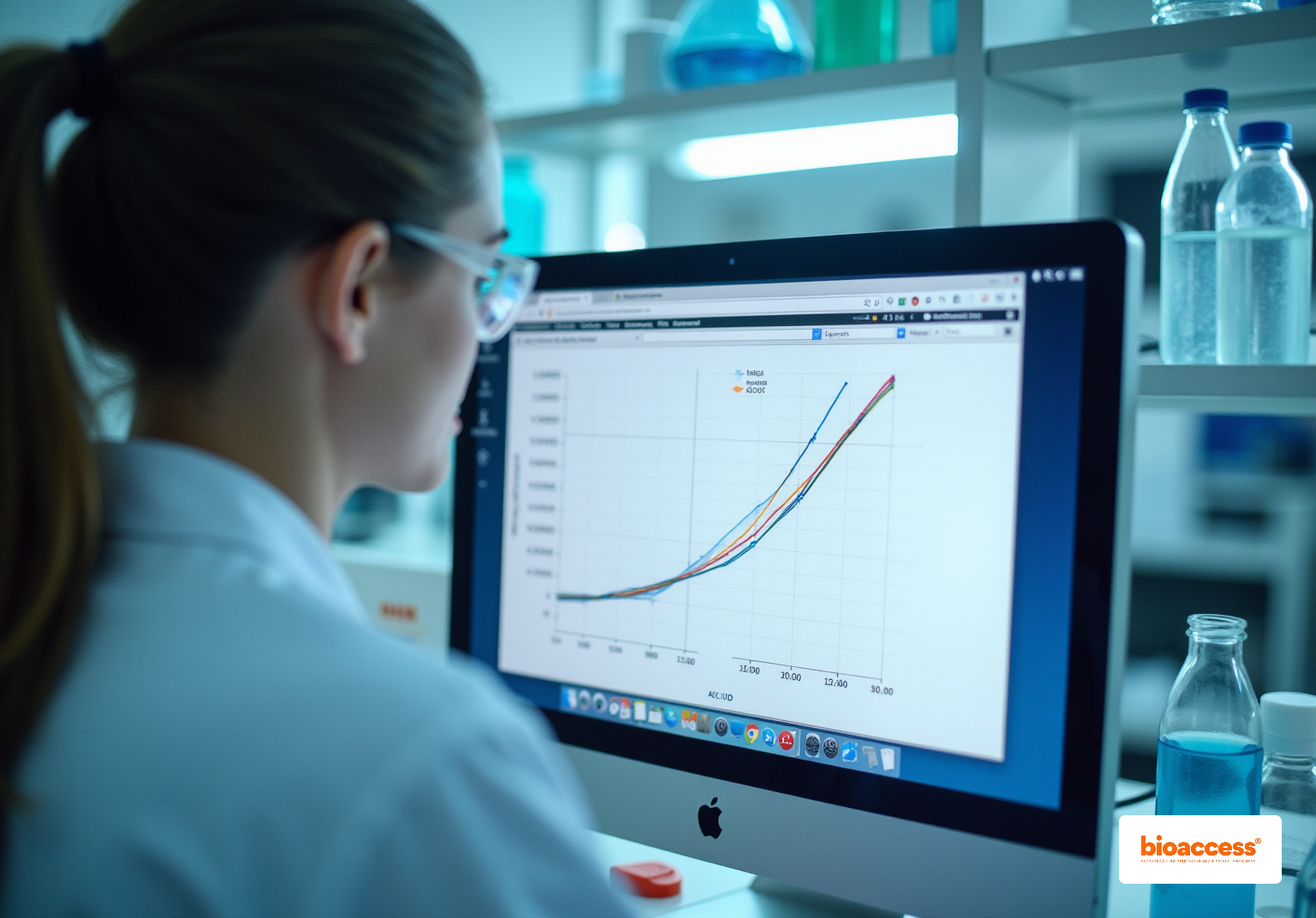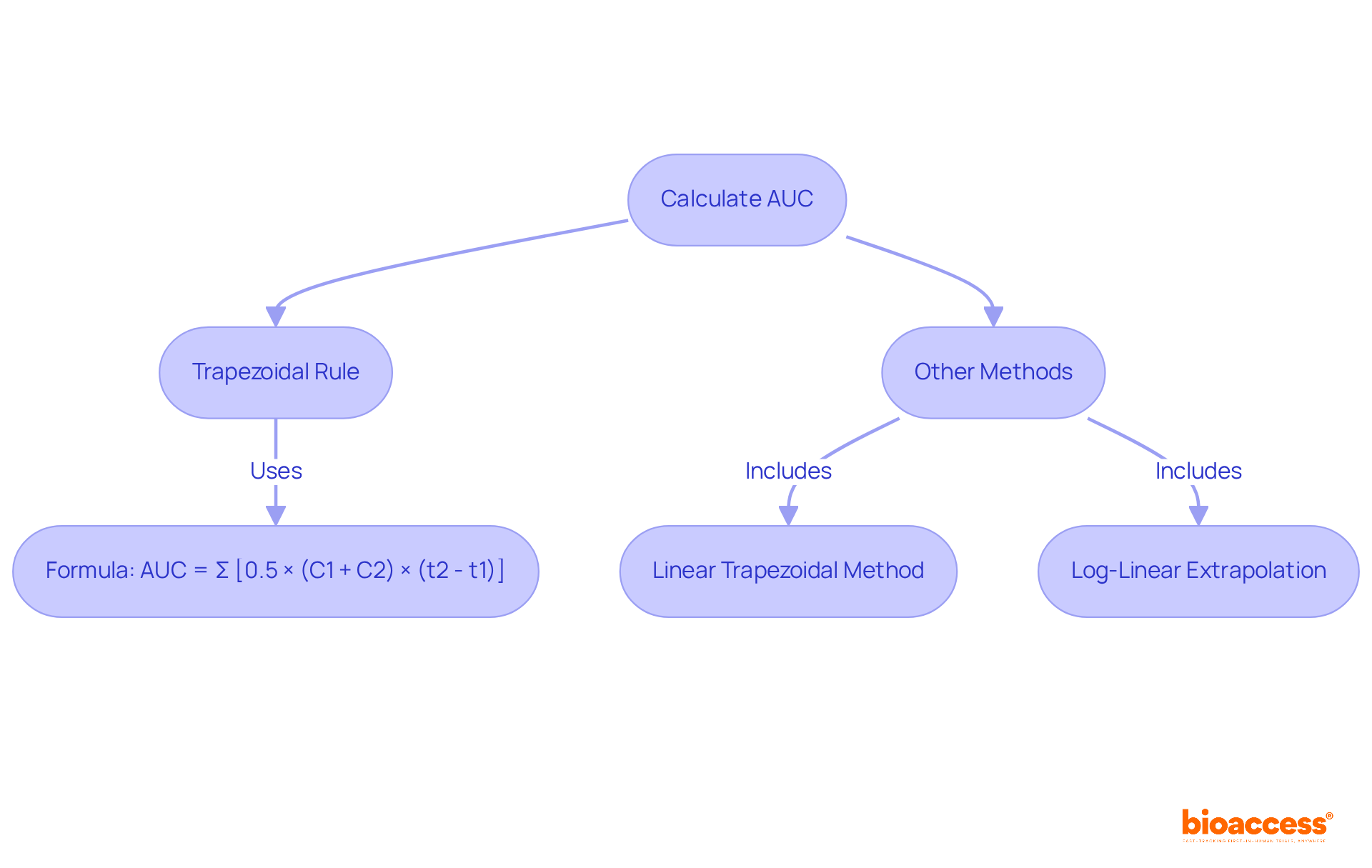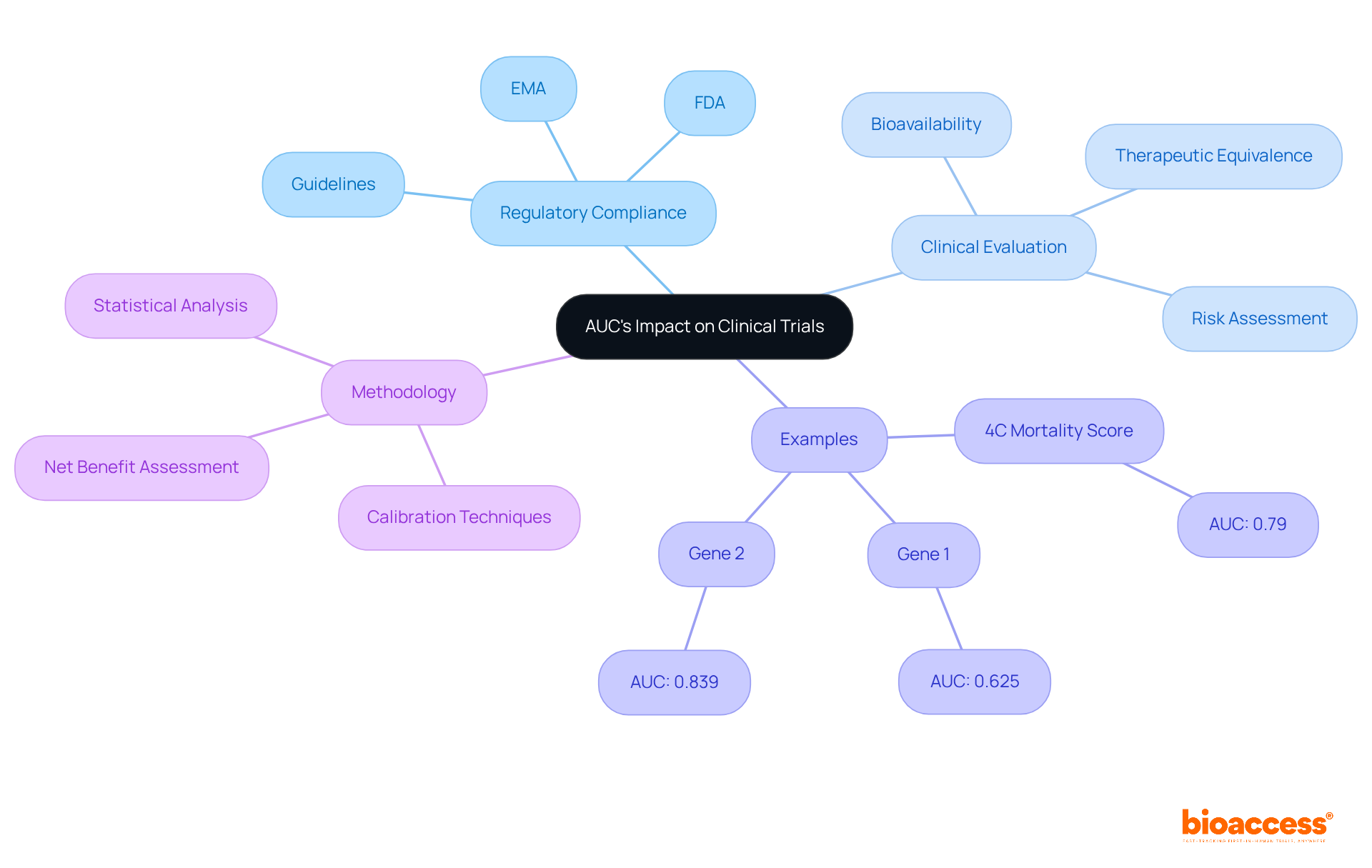


The article underscores the critical significance of the Area Under the Curve (AUC) in pharmacology. It details AUC's pivotal role in evaluating drug exposure and bioavailability, alongside the methodologies utilized for its calculation. By illustrating how AUC is essential for optimizing medication dosages, it ensures safety and efficacy within clinical settings, while also adhering to regulatory standards. This comprehensive overview highlights AUC's indispensable contribution to pharmacokinetics and drug development.
Understanding the area under the curve (AUC) in pharmacology is essential for assessing how substances interact within the body, influencing everything from drug efficacy to safety. This critical metric not only quantifies total drug exposure over time but also serves as a foundation for determining optimal dosing strategies and evaluating bioavailability in clinical settings.
However, as the complexities of drug interactions and individual patient responses come into play, pharmacologists must ensure accurate AUC calculations that genuinely reflect therapeutic potential. This is not merely a technical requirement; it is a vital component in the quest for effective and safe pharmacological therapies.
The pharmacology AUC represents the integral of a substance's plasma concentration over time following administration, serving as a crucial indicator of total exposure within the body. Expressed in units such as mg·h/L, the pharmacology AUC is derived from the concentration-time curve established during pharmacokinetic studies. This metric is essential in pharmacology AUC for evaluating medication bioavailability, as it quantifies how much of a substance reaches systemic circulation and its potential therapeutic effects.
For instance, in studies involving gentamicin, AUC assessments guide dosage modifications due to the substance's nephrotoxic and ototoxic characteristics, thereby ensuring effective and safe treatment protocols. Recent advancements, including the 2019 OTTER algorithm, have refined AUC calculation methods in pharmacology AUC, thereby enhancing the accuracy of sample timing and improving the reliability of pharmacokinetic assessments.
Understanding pharmacology AUC is imperative for pharmacologists and clinicians, as it directly influences medication development and treatment strategies. Furthermore, pharmacology AUC is pivotal in therapeutic drug monitoring for drugs with a narrow therapeutic index, ensuring that drug levels remain within a safe and effective range.
The trapezoidal rule is frequently employed for pharmacology AUC assessment, segmenting the concentration-time curve into trapezoids to estimate the total area. AUC values span from 0.5, indicating performance akin to random chance, to 1, signifying perfect discrimination, which is essential for evaluating diagnostic performance.
The formula for pharmacology AUC calculation can be expressed as AUC = F * D / CL, where pharmacology AUC represents F as bioavailability, D as the dose, and CL as clearance.

In pharmacology AUC, the area under the concentration-time curve (AUC) serves as a fundamental parameter that quantifies total substance exposure over time, reflecting the extent of absorption and elimination. Pharmacology AUC is directly proportional to the total quantity of unchanged medication that enters systemic circulation, making it an essential metric for comparing various formulations and routes of administration. For instance, in treatment medication monitoring, AUC is utilized to refine dosing strategies, particularly for substances with narrow efficacy ranges, thereby ensuring effectiveness while mitigating toxicity.
By analyzing pharmacology AUC, researchers can effectively evaluate a medication's bioavailability, which is critical for assessing its therapeutic window. This evaluation informs clinical decisions regarding dosing schedules, as pharmacology AUC provides insight into the relationship between concentration and pharmacological effects. In oncology, for example, AUC evaluations guide dosing adjustments based on individual patient responses, ultimately enhancing treatment outcomes.
Moreover, pharmacology AUC plays a pivotal role in regulatory contexts, with agencies such as the FDA and EMA requiring pharmacology AUC calculations to ascertain bioequivalence between generic and brand-name medications. This regulatory scrutiny highlights the importance of AUC in ensuring that different formulations yield comparable therapeutic effects. However, it is crucial to recognize that AUC measurements may vary due to factors such as food intake, organ dysfunction, and genetic differences, which can influence clearance and efficacy. Additionally, AUC may not reliably predict efficacy and safety in pediatric and geriatric populations, underscoring its limitations.
Overall, mastering pharmacology AUC calculations is essential for clinicians and researchers alike, as it aids in optimizing medication therapy and enhancing patient safety.

Calculating the pharmacology AUC is essential in pharmacokinetic analysis, and it can be accomplished using several methods, the trapezoidal rule being the most prevalent. This method involves dividing the concentration-time curve into segments that form trapezoids, subsequently summing their areas to derive the AUC. The formula for the trapezoidal rule is as follows:
AUC = Σ [0.5 × (C1 + C2) × (t2 - t1)],
where C1 and C2 represent the concentrations at two consecutive time points, while t1 and t2 denote the corresponding times. Other viable methods include the linear trapezoidal method and log-linear extrapolation for estimating AUC to infinity. Each method presents distinct advantages and is selected based on the specific data available and the study design. Understanding these techniques is crucial for accurate pharmacokinetic analysis and interpretation, which underscores the importance of employing the appropriate pharmacology AUC method in clinical research.

The pharmacology AUC serves as a pivotal metric in clinical trials, particularly for evaluating bioavailability and therapeutic equivalence. Regulatory authorities, such as the FDA and EMA, mandate AUC data in new product submissions to guarantee that products adhere to stringent safety and efficacy standards. The pharmacology AUC analysis is indispensable for establishing optimal dosing regimens and understanding the pharmacokinetic behavior of substances across diverse populations.
For example, the AUC for the 4C Mortality Score, validated in a cohort of 6,082 patients, reached a value of 0.79, demonstrating robust discriminative ability in predicting 30-day mortality risk among COVID-19 patients. Moreover, the AUC for gene 1 in the ovarian cancer dataset was calculated at 0.625, whereas gene 2 exhibited an AUC of 0.839, indicating superior performance as a diagnostic marker.
This highlights the critical role of pharmacology AUC in identifying potential drug interactions and informing risk assessments, ultimately enhancing patient outcomes. The diagnostic odds ratio (DOR) for the GH deficit dataset was noted at 35.1, further exemplifying AUC's practical application in evaluating diagnostic performance.
By adhering to AUC-related guidelines, researchers can enhance the credibility of their findings and streamline the regulatory approval process. Furthermore, contemporary literature indicates that AUC values should be reported devoid of arbitrary labels, underscoring the significance of calibration and net benefit in assessing prediction models. This methodology aligns with the evolving regulatory landscape, where the emphasis is shifting towards comprehensive evaluations that encompass both statistical and clinical implications.

Understanding the area under the curve (AUC) in pharmacology is essential for comprehensively evaluating drug exposure and bioavailability. This integral metric not only quantifies how much of a drug enters systemic circulation but also informs critical decisions regarding dosing and therapeutic strategies. By mastering AUC calculations and their implications, pharmacologists and clinicians can enhance medication efficacy while minimizing potential toxicity.
The significance of AUC in pharmacokinetics cannot be overstated; it plays a pivotal role in assessing drug absorption and elimination, particularly for substances with narrow therapeutic windows. Key methods for calculating AUC, such as the trapezoidal rule, are crucial, alongside their applications in clinical trials and regulatory compliance. Furthermore, AUC influences treatment protocols and drug development, ensuring that medications adhere to stringent safety and efficacy standards.
Ultimately, the importance of AUC transcends mere calculations; it serves as a cornerstone for optimizing patient care and advancing pharmacological research. By embracing the methodologies and insights presented, stakeholders in the medical field can navigate the complexities of drug therapy more effectively, paving the way for improved patient outcomes and a deeper understanding of pharmacokinetics. Engaging with AUC not only enhances clinical practice but also supports the ongoing evolution of pharmacological science.
What does AUC stand for in pharmacology?
AUC stands for Area Under the Curve, which represents the integral of a substance's plasma concentration over time following administration.
Why is AUC important in pharmacology?
AUC is crucial for evaluating medication bioavailability, as it quantifies how much of a substance reaches systemic circulation and its potential therapeutic effects.
How is AUC calculated?
AUC is calculated using the formula AUC = F * D / CL, where F represents bioavailability, D is the dose, and CL is clearance.
What units are used to express AUC?
AUC is expressed in units such as mg·h/L.
What role does AUC play in drug monitoring?
AUC is pivotal in therapeutic drug monitoring for drugs with a narrow therapeutic index, ensuring that drug levels remain within a safe and effective range.
How does AUC influence dosage adjustments?
AUC assessments guide dosage modifications in medications, such as gentamicin, to ensure effective and safe treatment protocols, particularly due to potential nephrotoxic and ototoxic effects.
What method is commonly used to assess AUC?
The trapezoidal rule is frequently employed for AUC assessment, segmenting the concentration-time curve into trapezoids to estimate the total area.
What does an AUC value indicate?
AUC values range from 0.5, indicating performance akin to random chance, to 1, which signifies perfect discrimination, essential for evaluating diagnostic performance.
What advancements have improved AUC calculation methods?
Recent advancements, such as the 2019 OTTER algorithm, have refined AUC calculation methods, enhancing the accuracy of sample timing and improving the reliability of pharmacokinetic assessments.
Who should understand pharmacology AUC?
Understanding pharmacology AUC is imperative for pharmacologists and clinicians, as it directly influences medication development and treatment strategies.